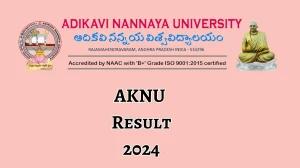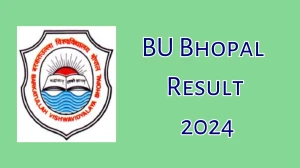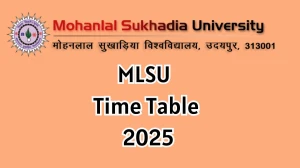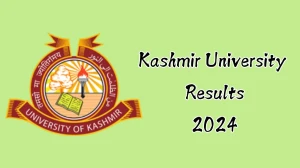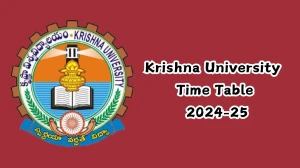- Rojgarlive »
- Education »
- TS 2nd Year Inter Geography Syllabus 2024-25 at tgbie.cgg.gov.in Download Geography Syllabus Pdf Here
TS 2nd Year Inter Geography Syllabus 2024-25 at tgbie.cgg.gov.in Download Geography Syllabus Pdf Here
by Sangeetha
Updated Oct 03, 2024
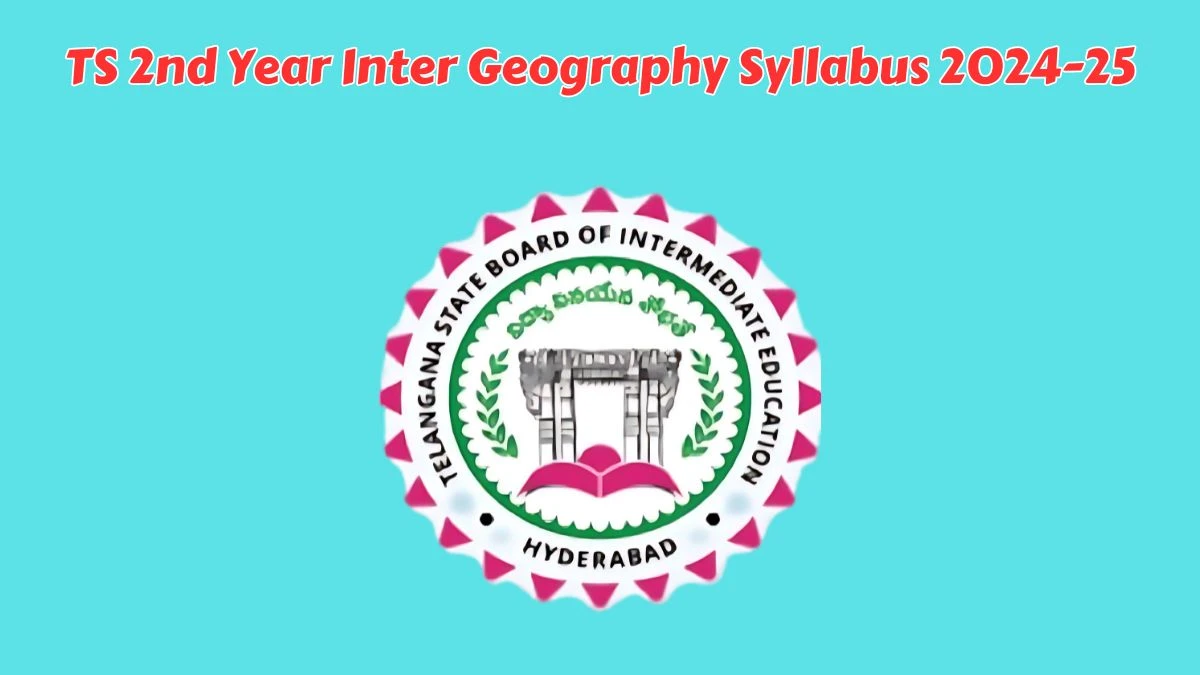
TS 2nd Year Inter Geography Syllabus 2024-25 at tgbie.cgg.gov.in Download Geography Syllabus Pdf Here
The TS Inter 2nd Year Geography syllabus for the 2024-25 academic year emphasizes understanding both the physical and human aspects of geography. This engaging subject plays a significant role in enhancing general knowledge.
The Telangana Board has released the 2nd Year Geography Syllabus for 2025, which aims to provide students with insights into the geography of India and Telangana, along with engaging map work. To view and download the complete TS 2nd Year Geography syllabus for 2024-25, please scroll down for more information.
Check - TS 2nd Year Inter Geography Syllabus 2024-25
|
Part A |
|
Unit 1: Human Geography |
|
Meaning, Nature, scope and relevance of Human Geography; Man - Environment relationships; Branches of Human Geography - their general characteristics ; |
|
Unit 2: World Population |
|
Distribution, density of population, Growth of population in the world. |
|
Composition of population: Age and Sex. |
|
Factors affecting/influencing distribution of population, |
|
Migration: Internal and international; Causes and consequences |
|
Human Development: concepts, Indicators and world patterns |
|
Unit 3: Economic Geography |
|
Economic Geography: Definition, Scope and Significance ; |
|
Sectors of Economic activity: Concepts, changing trends. |
|
Primary Activities: Concepts, changing trends. |
|
Food gathering, pastoral, mining and subsistence agriculture. |
|
Modern agriculture, people engaged in agricultural and allied activities. |
|
Fisheries - factors and important fishing grounds ; |
|
agriculture regions of the world. |
|
Secondary Activities: Concepts. Manufacturing industries: Locational factors, types - distribution |
|
and production - Agro based: Textile (cotton), forest-based (paper), Mineral based (Iron and |
|
steel) : Petro-chemical. |
|
Small scale manufacturing industries: locational factors, distribution and production. |
|
People engaged in secondary activities examples |
|
Tertiary Economic activities: Concepts, Trade, Transport and tourism; services, people |
|
engaged in the tertiary activities with some examples |
|
Quarternary Economic activities: Concepts, people engaged in the quaternary with some |
|
examples. |
|
Unit 4: World Transport and Trade |
|
Relative significance of different means of transport - Land transport, Railways - transcontinental railways, Airways and Waterways. |
|
Factors affecting land, water and air transport ; |
|
World oceanic routes; important inland waterways and important canals ; |
|
International trade - Impact of globalisation and economic development. |
|
Role of WTO in International trade (World Trade Organization) |
|
Unit 5: Environment and Resources |
|
Resources: Definition, Classification - Resource depletion |
|
Environment: Meaning, definition and components ; |
|
Environmental conservation and management; sustainable development. |
|
Unit 6: Human Settlements |
|
Settlement types - rural and urban; urbanisation trends and consequences |
|
Part B (Geography of India) |
|
Unit 7: Physiography |
|
Locational characteristics ; Physical setting ; Physiographic divisions; Geology, Drainage |
|
system: The Himalayan and Peninsular System |
|
Unit 8: Climate |
|
Origin of monsoon, climatic regions in India; distribution of temperature and rainfall |
|
Soils: Types and distribution, characteristics ; Soil degration and conservation |
|
Vegetation: Types and distribution Wild life conservation, Biosphere reserves |
|
Unit 9: Population |
|
Population : Size, Growth, Distribution and Density from 1901-2011 ; demographic |
|
characteristics : literacy, sex ratio ; regional variations in population growth, |
|
Trends of Urbanization, population problems. |
|
Migration : International, National, causes and consequences. |
|
Human Development : Introduction and Regional Pattern |
|
Unit 10: Resources |
|
Mineral and Energy Resource Base : distribution and production Minerals - Iron ore, |
|
Manganese and Bauxite ; |
|
Power resources - Coal, Petroleum and natural gas, hydroelectric power ; Non - |
|
conventional sources of energy (Solar, Wind and Biogas), Conservation of Resources. |
|
Unit 11: Land Resources |
|
Agriculture : General Land Use, Land Use Classification Distribution and production of |
|
Major Crops - wheat, rice, sugarcane, cotton, caster and ground nut, Coffee and tea - their |
|
distribution, production and trade ; |
|
Impacts of Green revolution on Indian agriculture ; |
|
Problems of Indian agriculture. Land Degradation |
|
Unit 12: Water Resources |
|
Irrigation and Power : Types of Irrigation, Wells, canals and tanks ; Major multipurpose |
|
projects : Bakra Nangal, Nagarujuna Sagar, Narmada and Damodar Valley Corporation. |
|
Rain Water Harvesting and Watershed Management. |
|
Unit 13: Industries |
|
Location factors, growth, distribution and trade |
|
Iron and Steel, Petro Chemicals, Pharmaceuticals and Knowledge based industries (IT), |
|
Globalization and Economic Development, SEZs |
|
Unit 14: Transport and Trade |
|
Means of transport ; roadways, railways, airways and water ways, Major ports of India’s |
|
International trade. |
|
Part C- Telangana |
|
Unit 15: Telangana |
|
Administrative regions ; physiography, Geology, Drainage : |
|
Unit 16: Climate |
|
Distribution of climate, temperature and rainfall. |
|
Soils : Types and distribution, characteristics ; Soil degradation and conservation |
|
Vegetation : Types and distribution |
|
Unit 17: Population |
|
Size, Growth, Distribution and Density from 1961-2011 ; demographic characteristics : |
|
literacy, sex ratio ; Rural and Urban populations. |
|
Practical Syllabus |
|
1. Diagrammatic Representation of Geographical Data: Types and their uses ; |
|
One - Dimensional : Line diagram, bar diagrams - simple bar, compound bar, multiple |
|
bar diagram ; pyramid diagram - age - sex pyramid. |
|
Two - dimensional : Square and Rectangular diagrams, Pie diagram ; |
|
Three- Dimensional : Cube and Sphere diagrams. |
|
2. Distribution maps : Dot, Isopleth maps - uses, merits and demerits, Choropleth, |
|
Chorochromatic and choroschematic methods and their charactristics, Isotherm, |
|
Isobars and Isohyets. |
|
3. Sources and Data : Tabulation and Classification of Data ; Frequency Distribution, |
|
Histogram, Frequency Polygon and Ogive Curve. |
|
4. Measures of Central Tendency : Mean Median and Mode. Measures of dispersion : |
|
Range, Quartiles, Mean Deviation and Standard Deviation, relative measure of |
|
dispersion. |
|
5. Introduction to GIS : Introduction Geographical Information System (GIS) and |
|
Global Positioning System (GPS). |
TS 2nd Year Inter Geography Syllabus 2024-25 - FAQs
The syllabus emphasizes both the physical and human aspects of geography, providing students with a comprehensive understanding of geographical concepts, processes, and relationships.
The syllabus includes various chapters covering topics such as Human Geography, Economic Geography, World Transport and Trade, Environment and Resources, Human Settlements, Physiography, Climate, Soils, Vegetation, Population, and more.
